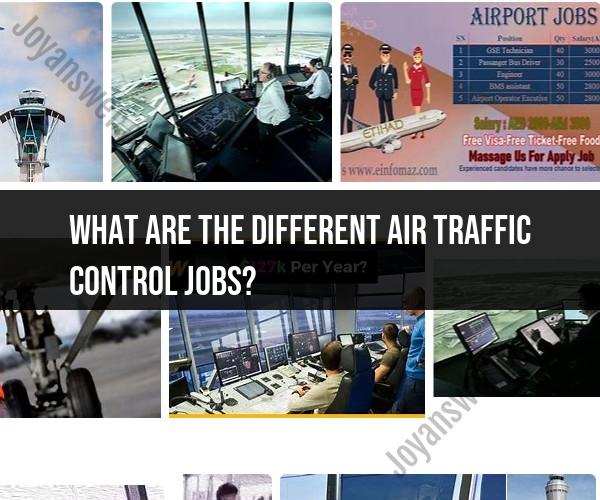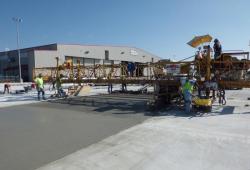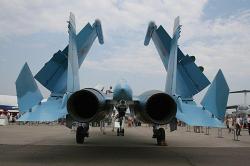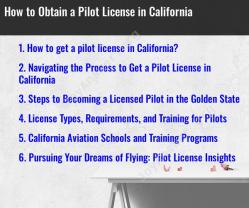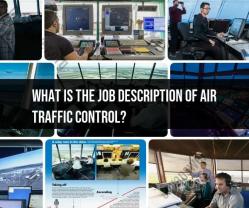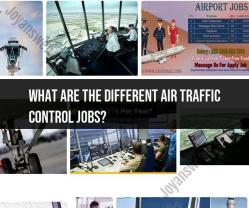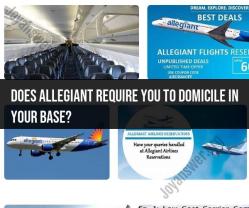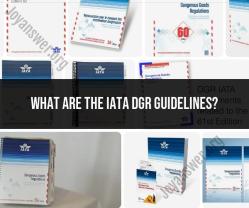What are the different air traffic control jobs?
Air traffic control (ATC) is a critical component of aviation safety and efficiency. It involves managing the movement of aircraft in the airspace and at airports. There are various roles and positions within the field of air traffic control, each with specific responsibilities. Here are some of the key air traffic control jobs:
Air Traffic Controller (ATC):
- Air traffic controllers work in control towers, approach and departure control facilities, and en-route centers.
- They are responsible for providing safe and orderly movement of aircraft.
- ATCs issue takeoff and landing instructions, provide vectors to guide aircraft during flight, and ensure aircraft maintain safe separation distances.
Tower Controller:
- Tower controllers work in airport control towers.
- They manage aircraft movements on the runways, taxiways, and airport apron.
- Responsibilities include clearing aircraft for takeoff and landing, ensuring safe taxiing, and coordinating with ground vehicles.
Ground Controller:
- Ground controllers manage aircraft on the airport's surface but do not control takeoffs and landings.
- They assist with aircraft movements on taxiways and between runways and terminals.
- Ground controllers help prevent runway incursions and ensure efficient ground operations.
Local Controller:
- Local controllers manage aircraft during takeoff and landing within the airport's immediate vicinity.
- They issue clearances for takeoff and landing and provide traffic sequencing instructions.
Approach and Departure Controller:
- Approach and departure controllers work at radar facilities or control towers with radar capability.
- Approach controllers guide arriving aircraft as they transition from en-route airspace to the terminal area.
- Departure controllers assist aircraft as they climb out from the airport.
- They provide vectors and altitude assignments to maintain safe spacing.
En-Route Controller:
- En-route controllers work in air traffic control centers.
- They manage aircraft once they have departed the terminal airspace and are in en-route flight.
- Responsibilities include providing route clearances, altitudes, and traffic separation instructions.
Flight Data Specialist (FDS):
- Flight data specialists provide essential support to air traffic controllers.
- They assist in processing flight plans, entering data into computer systems, and ensuring that aircraft have the necessary information for their flights.
Radar Technician:
- Radar technicians are responsible for maintaining and repairing radar equipment used in air traffic control.
- They ensure that radar systems are operational, accurate, and reliable.
Aeronautical Information Specialist:
- Aeronautical information specialists compile and distribute critical aviation information, including charts, airport diagrams, and NOTAMs (Notices to Airmen).
Supervisory and Management Roles:
- Within air traffic control facilities, there are various supervisory and management positions responsible for overseeing the operations of the entire facility or a specific area.
Air traffic control is a highly specialized and demanding field that plays a crucial role in aviation safety. The different roles within ATC require extensive training, certification, and continuous professional development to ensure the safety and efficiency of air travel.
What are the various career options in air traffic control?
There are a variety of career options in air traffic control, including:
- Air traffic control specialist: Air traffic control specialists are responsible for directing and monitoring aircraft in flight. They use radar and other equipment to track aircraft and ensure safe separation between planes.
- Air traffic control supervisor: Air traffic control supervisors oversee the work of air traffic control specialists. They are responsible for ensuring that the air traffic control system operates safely and efficiently.
- Radar controller: Radar controllers use radar to track aircraft and provide guidance to air traffic control specialists.
- Approach controller: Approach controllers guide aircraft as they approach and land at airports.
- Departure controller: Departure controllers guide aircraft as they take off and depart from airports.
- En route controller: En route controllers guide aircraft as they fly between airports.
- Terminal controller: Terminal controllers guide aircraft as they arrive and depart from airports.
How do jobs in air traffic control differ based on the specific roles and locations?
The specific duties and responsibilities of air traffic controllers vary depending on their role and location. For example, air traffic control specialists who work in towers are responsible for guiding aircraft as they take off and land at airports. Air traffic control specialists who work in en route centers are responsible for guiding aircraft as they fly between airports.
The work environment of air traffic controllers also varies depending on their location. Air traffic controllers who work in towers typically work in a brightly lit room with a lot of noise. Air traffic controllers who work in en route centers typically work in a more subdued environment.
What is the path to becoming an air traffic control specialist or supervisor?
To become an air traffic control specialist or supervisor, you must typically meet the following requirements:
- Be a U.S. citizen
- Be at least 18 years old
- Have a high school diploma or equivalent
- Pass a background check and medical exam
You can also train to become an air traffic controller through the following programs:
- Air Traffic Collegiate Training Initiative (AT-CTI): The AT-CTI program is a two-year program that trains students to become air traffic control specialists. The program is offered at selected colleges and universities.
- Federal Aviation Administration (FAA) Academy: The FAA Academy is a nine-week program that trains students to become air traffic control specialists. The academy is located in Oklahoma City, Oklahoma.
After completing training, all new air traffic controllers must complete on-the-job training. On-the-job training typically lasts several months.
Are there specialized positions within air traffic control, such as radar control?
Yes, there are specialized positions within air traffic control, such as radar control. Radar controllers use radar to track aircraft and provide guidance to air traffic control specialists. Radar controllers must have a good understanding of radar technology and be able to interpret radar data quickly and accurately.
Other specialized positions in air traffic control include:
- Approach controller: Approach controllers guide aircraft as they approach and land at airports.
- Departure controller: Departure controllers guide aircraft as they take off and depart from airports.
- En route controller: En route controllers guide aircraft as they fly between airports.
- Terminal controller: Terminal controllers guide aircraft as they arrive and depart from airports.
Can you explain the differences between tower controllers and en route controllers?
Tower controllers are responsible for guiding aircraft as they take off and land at airports. They use radar and other equipment to track aircraft and ensure safe separation between planes. Tower controllers also coordinate with pilots to ensure that aircraft are following the correct taxiways and runways.
En route controllers are responsible for guiding aircraft as they fly between airports. They use radar and other equipment to track aircraft and ensure safe separation between planes. En route controllers also coordinate with pilots to ensure that aircraft are following the correct flight plans.
Tower controllers and en route controllers play different but equally important roles in the air traffic control system. They work together to ensure that aircraft arrive and depart safely and efficiently.
